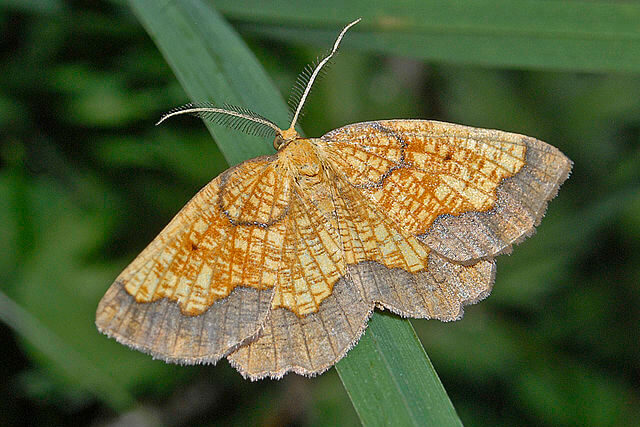
A moth teetering on the brink of extinction in the UK, which has been successfully reared in captivity for the first time, has been spotted in flight at a location where its caterpillars were released.
The dark bordered beauty moth, existing in only three British locations, is benefiting from a conservation initiative aimed at establishing new populations in the Scottish Highlands.
Recently emerged male moths were found in non-lethal light traps, following the release of 160 caterpillars at an undisclosed Cairngorms site this summer. This discovery offers hope that this imperilled moth species can experience a revival.
The moth’s precarious existence in England, found only in two Cairngorms locations, is closely tied to the suckering aspen trees in Scotland. These trees, relatively uncommon, serve as the feeding grounds for the moth’s caterpillars. However, the young shoots of aspen are susceptible to grazing by livestock and excessive wild deer populations.
In a groundbreaking effort in 2022, the Royal Zoological Society of Scotland (RZSS) and allied conservation charities orchestrated the inaugural captive breeding initiative for this moth species. 40 eggs were collected from the wild and nurtured in a specialised breeding facility at the Highland Wildlife Park. This process yielded 497 eggs, which subsequently developed into caterpillars and matured into adults. Out of these, 160 caterpillars were reintroduced into their natural habitat.
Dr Tom Prescott, the head of conservation for Butterfly Conservation Scotland, said: “I was peering in the moth trap and I could see one on an egg carton in the trap. I couldn’t quite believe my eyes – it was very exciting.
“We hope this is just the start of the moth becoming established at this site – it shows that the habitat is correct, and we hope the population will thrive and become sustainable there.”
Conservation scientists were elated to discover the first moths emerging from these released caterpillars through light traps stationed for monitoring at the release site. While the aspiration is to locate female moths within the species’ brief flight season, which lasts a couple of weeks, the RZSS emphasises that meticulous captive breeding will continue for several years.
The breeding program prioritizes maintaining genetic diversity by carefully pairing and managing breeding moths. Simultaneously, conservationists are collaborating with landowners to identify suitable sites with ample young aspen shoots for additional releases. Encouraging the species’ natural propagation, although not known for its mobility, is also a priority.
Dr Helen Taylor, the conservation programme manager at RZSS, said: “This is a really important and exciting step in our efforts to save dark bordered beauty moths, but there’s still a long way to go.
“We have made a long-term commitment to help improve the conservation status of dark bordered beauty moths and ideally we would like to see successfully reintroduced, self-sustaining populations at multiple sites to safeguard the future of this stunning, but little-known moth. That’s going to take a few years, but this is a brilliant start.”
This moth species is among several endangered invertebrates in the Cairngorms region undergoing revitalisation efforts. Notable among these are the silver stiletto fly, the pine hoverfly, and the small scabious mining bee. Through these endeavours, conservationists are striving to breathe new life into fragile ecosystems and bolster the vitality of these critical species.
Taylor said: “All insects play vital roles in the ecosystems they live in, from pollination to waste recycling. Without these often overlook animals, ecosystems start to fall apart. Working with big, fluffy, charismatic animals is also important, but if we want healthy ecosystems to release animals like beavers and wildcats into, then we need to look after little guys like dark bordered beauty as well. I’m really glad that at RZSS we are working at both ends of that scale.”
——————————————————————————
At Natural World Fund, we are passionate about stopping the decline in our wildlife.
The decline in our wildlife is shocking and frightening. Without much more support, many of the animals we know and love will continue in their decline towards extinction.
When you help to restore a patch of degraded land through rewilding to forests, meadows, or wetlands, you have a massive impact on the biodiversity at a local level. You give animals a home and food that they otherwise would not have had, and it has a positive snowball effect on the food chain.
We are convinced that this is much better for the UK than growing lots of fast-growing coniferous trees, solely to remove carbon, that don’t actually help our animals to thrive.
This is why we stand for restoring nature in the UK through responsible rewilding. For us, it is the right thing to do. Let’s do what’s right for nature!
Donate today at https://naturalworldfund.com/ and join in the solution!

